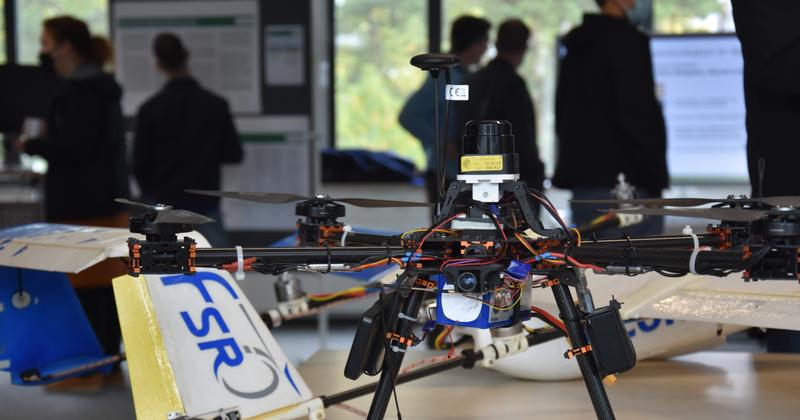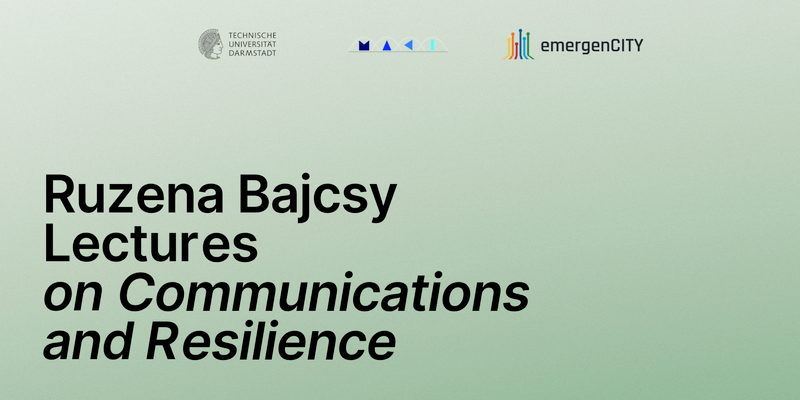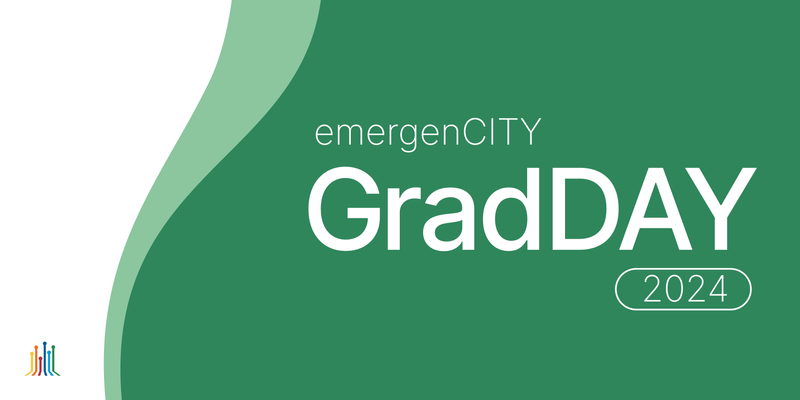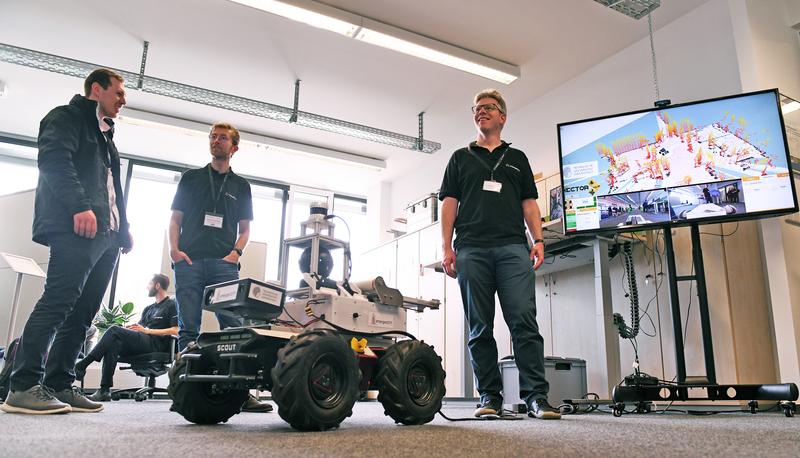In October, the first emergenCITY Demonstrator Fair took place, an in-house fair during which the latest developments and projects from the LOEWE Research Center were presented. All partners of the research center from science and industry, as well as all those interested in the topic of resilience of digital cities and friends of emergenCITY were invited.
In a lively exchange, exciting technical possibilities were discussed, advice was given on the best possible crisis prevention and response, and the current state of research and development was shown. Thus, the Demonstrator Fair not only offered the opportunity to get an up-close look at the work of the research center, but also once again spurred networking and the exchange of ideas with the partners and among the approximately 90 LOEWE scientists.
The day started in the new eHUB on the Lichtwiese campus, which will soon be ready for research on crisis scenarios after a year of renovation and upgrading to a resilient smart home and research building. Here, the concept of a self-sufficient crisis HUB was presented, which remains functional even if critical infrastructure fails and can become an information and operations center. Also, in the future, buildings like the eHUB can serve as ground control stations from which a fleet of drones can launch to gather information and maintain a mobile flying communications network. Also presented at the eHUB was the interaction of smart home technology and warning systems. It was shown how a smart home can actively respond to alerts and, for example, close the doors in response to a smoke warning. The eHUB will officially open next spring.
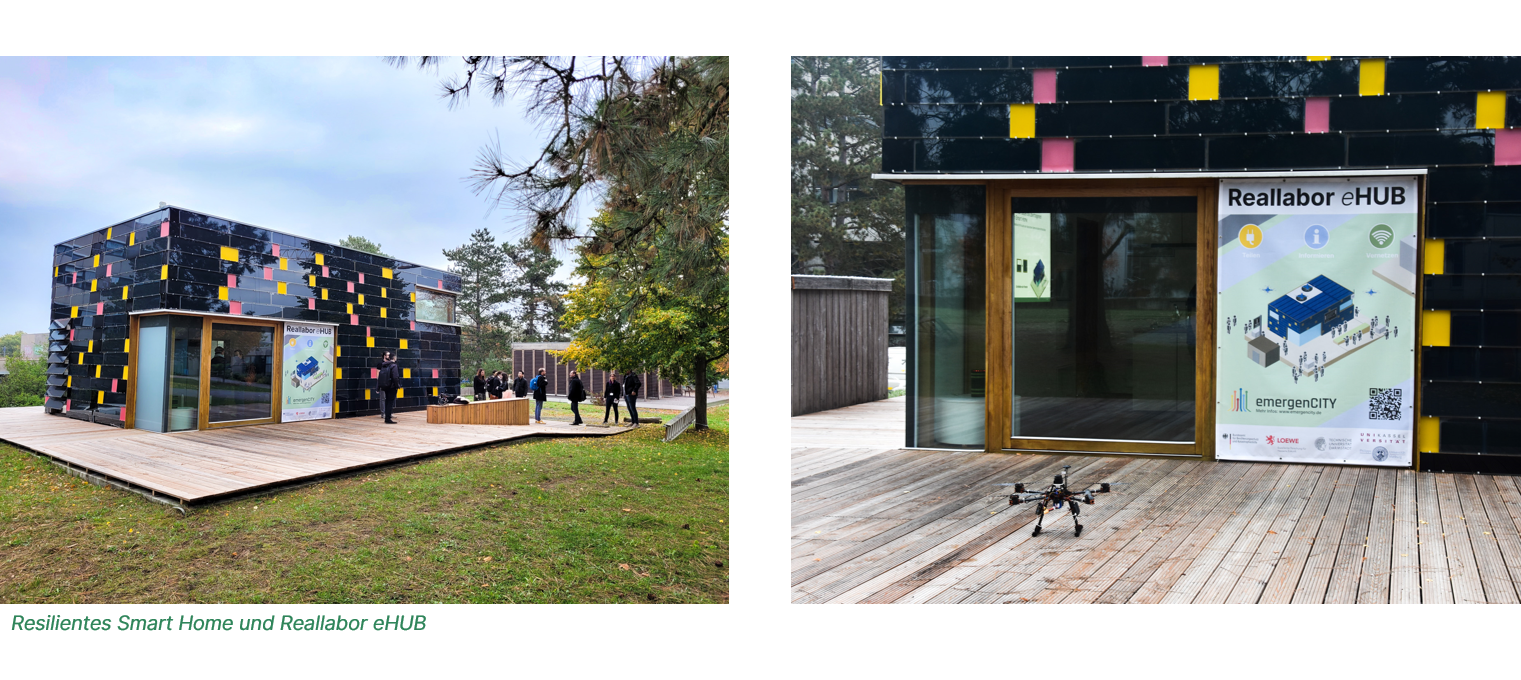
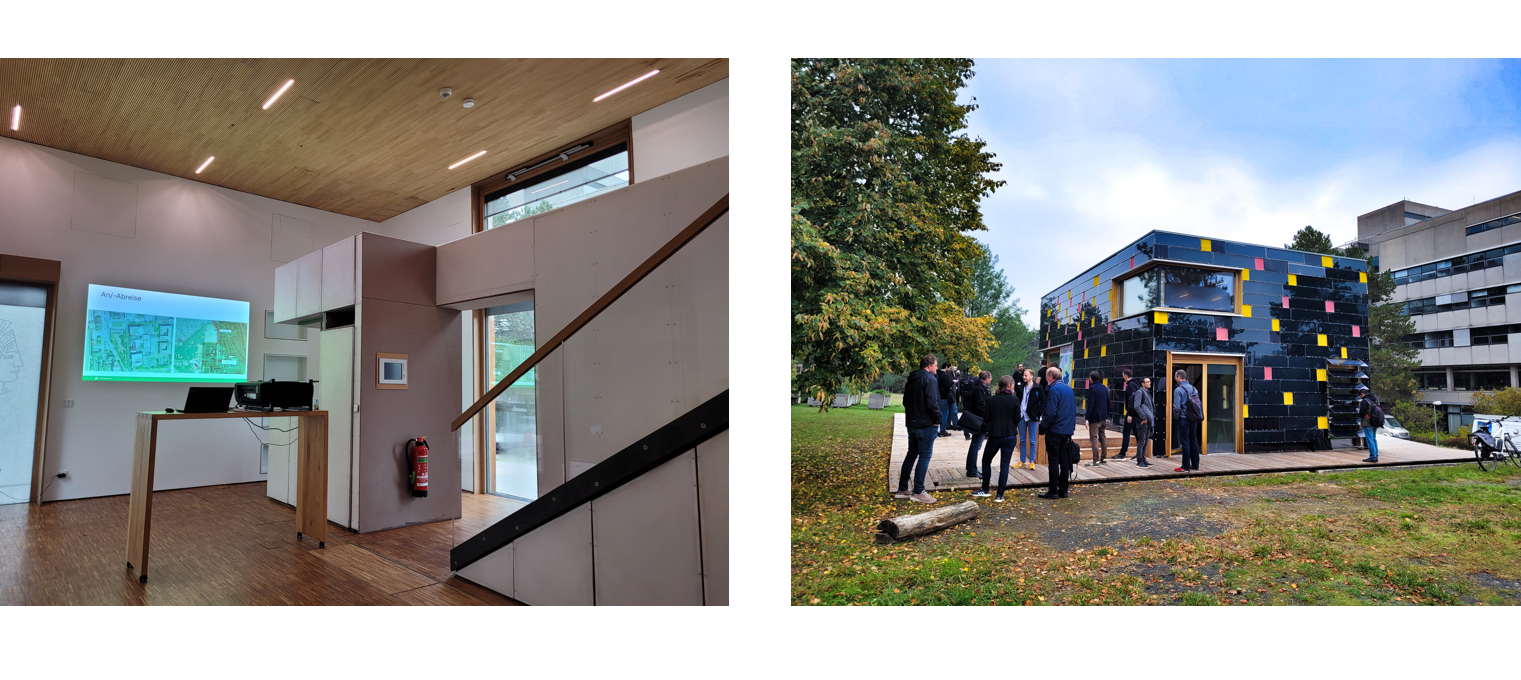 Afterwards, the Demonstrator Fair continued in the emergenCITY Lab. Here, the demonstrators of numerous emergenCITY projects were set up and explained personally by the researchers. Among them was NEXUS, an interactive simulation of water and energy networks equipped with sensors. In a simulation of the city of Darmstadt, for example, the demonstrator shows the effects on the supply networks in the event of a crisis, with the failure of various components such as generators or pumps.
Afterwards, the Demonstrator Fair continued in the emergenCITY Lab. Here, the demonstrators of numerous emergenCITY projects were set up and explained personally by the researchers. Among them was NEXUS, an interactive simulation of water and energy networks equipped with sensors. In a simulation of the city of Darmstadt, for example, the demonstrator shows the effects on the supply networks in the event of a crisis, with the failure of various components such as generators or pumps.
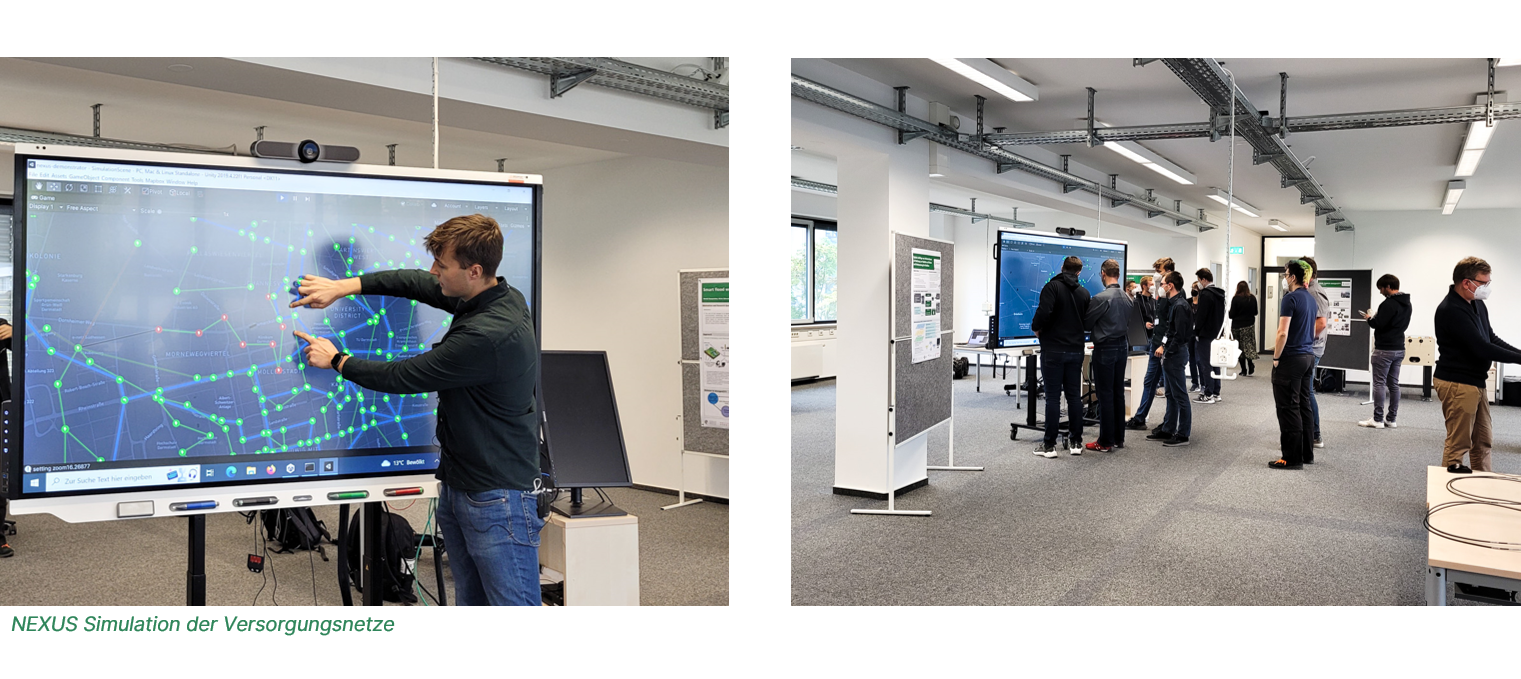
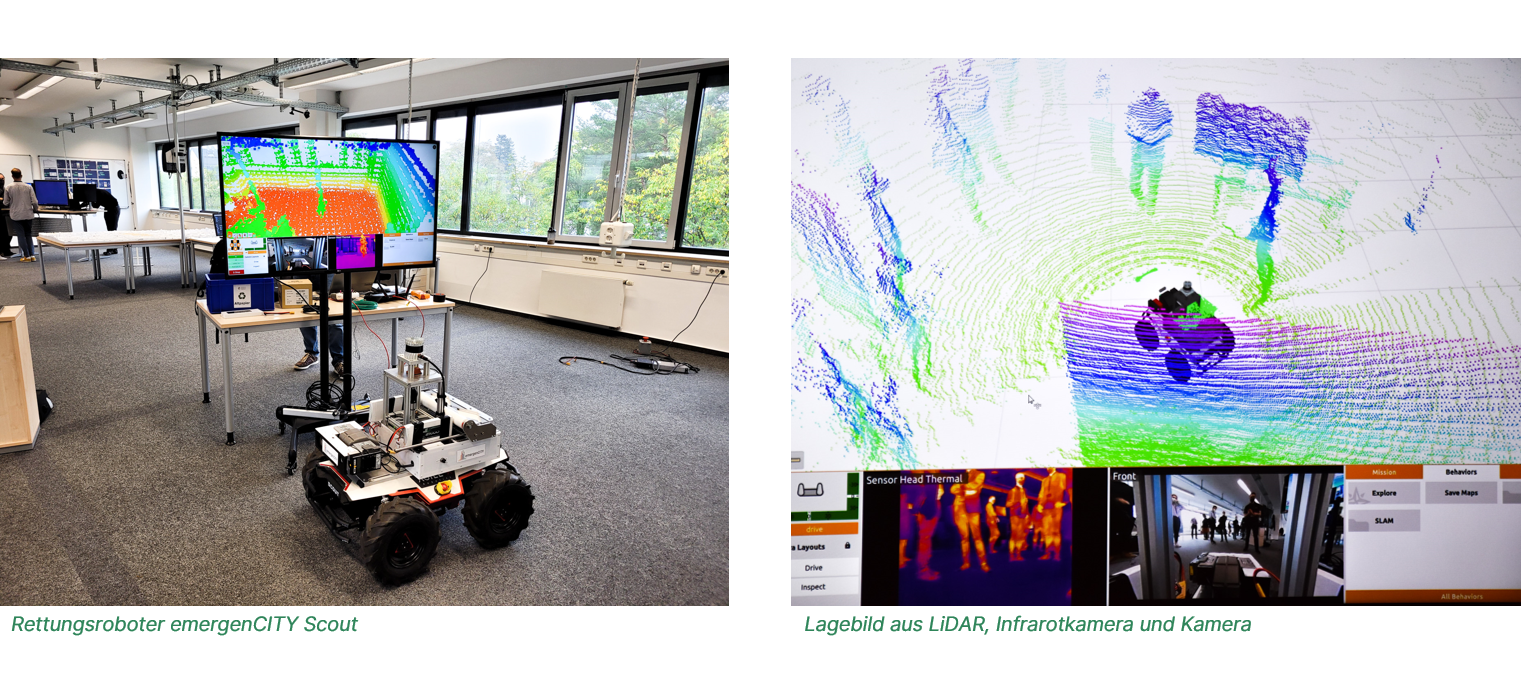 The rescue robot emergenCITY Scout was also in use at the Lab. Equipped with systems such as radar, lidar, camera and infrared cam, Scout can explore crisis situations, create a situation report and share its data with the Knowledge Base. The Knowledge Base, in turn, is a platform that will bundle all the data of a digital city in the future and process it in an interpretable way, with the aim of enabling faster and more efficient crisis responses. Related to this, the project KB Viz was shown, which evaluates past crisis cases in the Knowledge Base in order to learn from them.
The rescue robot emergenCITY Scout was also in use at the Lab. Equipped with systems such as radar, lidar, camera and infrared cam, Scout can explore crisis situations, create a situation report and share its data with the Knowledge Base. The Knowledge Base, in turn, is a platform that will bundle all the data of a digital city in the future and process it in an interpretable way, with the aim of enabling faster and more efficient crisis responses. Related to this, the project KB Viz was shown, which evaluates past crisis cases in the Knowledge Base in order to learn from them.
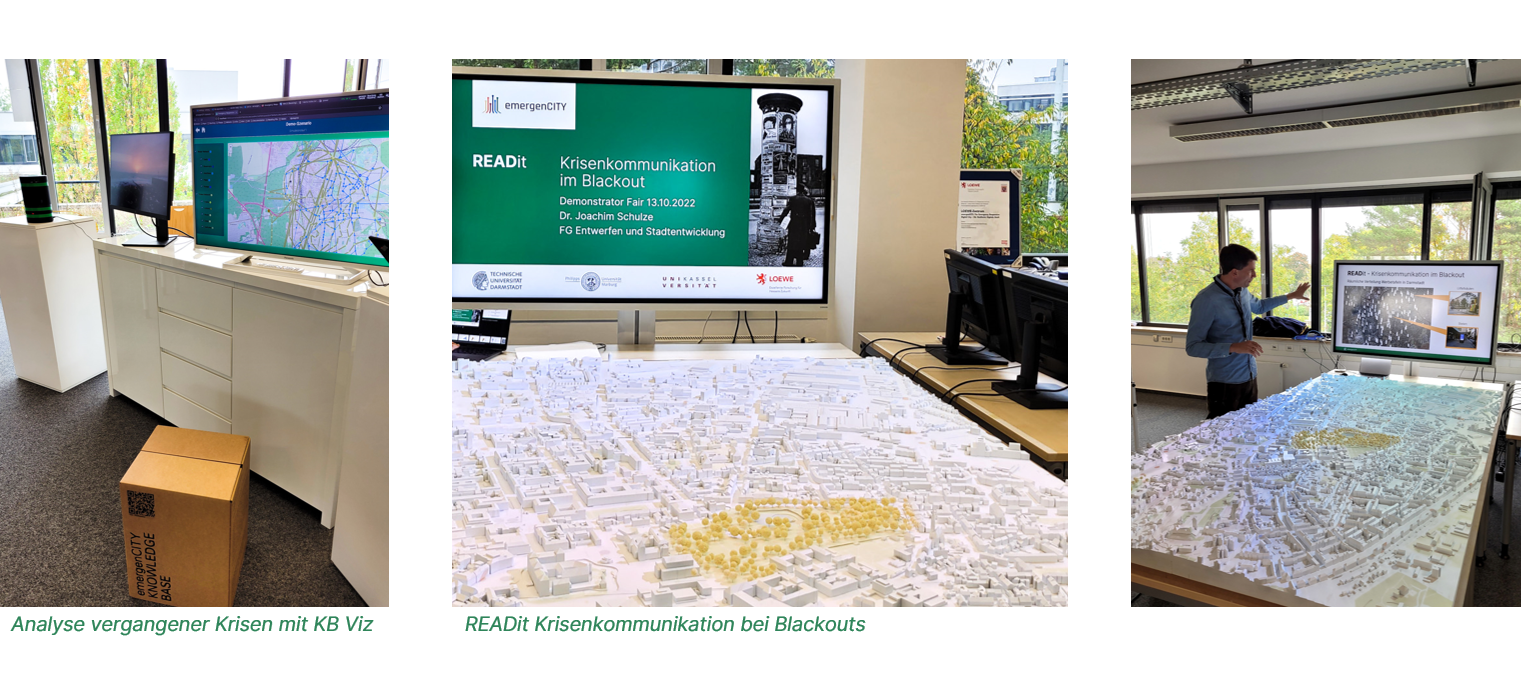 Another emergenCITY project, READit, addresses emergency communications and information for urban populations in the event of a prolonged supra-regional power outage. By upgrading already existing billboards and advertising pillars in the city, especially vulnerable groups shall be better reached. Also presented were, for example, the crowdinvesting platform tiaras.world for renewable energy infrastructure or a concept for a future smart flood warning system. Also, various interactive demos of applications using the emergenCITY dtn7 implementation, such as applications for weather warning, location broadcasting, or peer-to-peer newsgroups as in the ReSON app. The ReSON project is concerned with improving the self-organization of the population in the event of a crisis and is developing an app with which neighbors can still be reached thanks to peer-to-peer communication even without a functioning mobile network.
Another emergenCITY project, READit, addresses emergency communications and information for urban populations in the event of a prolonged supra-regional power outage. By upgrading already existing billboards and advertising pillars in the city, especially vulnerable groups shall be better reached. Also presented were, for example, the crowdinvesting platform tiaras.world for renewable energy infrastructure or a concept for a future smart flood warning system. Also, various interactive demos of applications using the emergenCITY dtn7 implementation, such as applications for weather warning, location broadcasting, or peer-to-peer newsgroups as in the ReSON app. The ReSON project is concerned with improving the self-organization of the population in the event of a crisis and is developing an app with which neighbors can still be reached thanks to peer-to-peer communication even without a functioning mobile network.

 At the end of the Demonstrator Fair, all scientists came together in a brainstorming session in the Lab. The focus was on the possibilities for future joint demonstrators, as well as for an even better collaboration of the already existing demonstrators, projects and ideas. In the coming year, interdisciplinary and cross-project work among the emergenCITY scientists will continue.
At the end of the Demonstrator Fair, all scientists came together in a brainstorming session in the Lab. The focus was on the possibilities for future joint demonstrators, as well as for an even better collaboration of the already existing demonstrators, projects and ideas. In the coming year, interdisciplinary and cross-project work among the emergenCITY scientists will continue.
